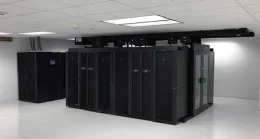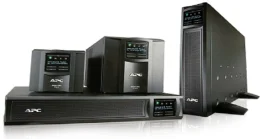What Is Your UPS Hardware Refresh Policy?
Technology refreshes provided opportunities to improve several operational performance and service areas within a datacentre and server room. Budgets allowing, progressive organisations have a hardware replacement policy for the major assets they operate. However, this tends to focus on ‘operational’ equipment rather than the hardware that is sometimes considered part of the support infrastructure. Examples here include cooling and uninterruptible power supplies. Managing the life cycle and refresh of these critical systems can give rise to major operational improvements.
UPS System Warranty Issues – Inside and Outside Cover
Uninterruptible power supplies as with any other hardware device come with a 12-36month warranty as standard. This will include the operational electronics and electrical components within the UPS system and may extend to any bypass switchgear supplied as part of the installation. The warranty does not cover batteries which are consumable parts and items including fans and capacitors.
Failures inside warranty are covered by the UPS manufacturer or supplier on a back-to-back basis. The reason for a short warranty period (e.g. 12-24 months) is to invite the owner to take out a UPS maintenance contract and/or an extended warranty. The latter may extend the standard warranty up to five years.
A typical UPS maintenance contract will provide access to 24/7 support, at least one or possibly two preventative maintenance visits per year and an emergency call out facility providing either working or clock hour response to site times. Guaranteed repair times are rare with some UPS manufacturers offering this type of service for a premium price.
Outside of warranty all parts are chargeable. This is to be expected with UPS batteries which are generally provided only with the battery supplier’s warranty on a pro-rata basis. Parts chargeable include consumables (fans and capacitors) and circuit boards, breakers and other assemblies inside the UPS which may require repair or replacement.
If an inverter stack or rectifier assembly requires replacement in a three phase UPS, the owner can expect a long downtime period whilst the UPS is repaired and possibly this may not be possible without removing the UPS system to a specialist repair facility or the manufacturer’s factory.
This assumes that spares and trained service engineers are available. Most commercial UPS systems have a manufacturing life of around five to 10 years before a design is refreshed. For industrial UPS this may be longer. The key issue being whether the manufacturer retains a stock of spare parts for end-of-life UPS systems or at least a facility or product line dedicated to manufacturing spares.
If new spare part parts are not available, the UPS service may be reliant on spares availability within the second user market place. Of course, these would not be supplied with any warranty and could be suspect themselves in terms of operational performance.
In terms of engineering support, it is always recommended to use a manufacturer certified UPS engineer who has undertaken service training to the required levels with the manufacturer. For discontinued UPS systems, there may be a lack of trained engineers and even published information available on how to repair or replace a component. If specialist software is also required for the service visit this can again be a limiting factor.
UPS and Battery Failure Rates
On-line UPS systems include an automatic maintenance bypass that allows the uninterruptible power supply to transfer the load to a bypass supply should the mains power supply fail. This is a safety feature to protect both the connected load(s) and the inverter/UPS itself.
As equipment ages the chances of a failure increase exponentially. Preventative maintenance helps to mitigate this and monitoring consumables such as fans, capacitors and battery sets can help to identify suspect components that require more regular inspection and eventual replacement.
A commercial UPS will use either five or 10-year design life batteries. These will require replacement within 3-4 and seven 7-8 years respectively if they have been operated within the battery manufacturer’s recommended environmental conditions (ambient at 20-25˚C) and with a suitable charging circuit. Most UPS include some form of automatic battery testing, but this cannot be relied upon to identify more than a suspect battery string. The automatic battery testing cannot generally identify a single block failure and it is this sort of scenario that can lead to an eventual UPS battery failure.
Capacitors failure is also common within UPS older UPS systems and most manufacturers recommend a capacitor change around year 8 of a system working life.
Most commercial UPS with a regular battery refresh and preventative maintenance will provide around 10 years incident-free operational performance.
UPS Energy Efficiency
Commercial UPS system development is driven by demand within the server room and datacentre market place. As with other critical systems including air conditioning, the drive in recent years has been to make systems more energy efficient and compact.
Transformer-less UPS systems have become the norm for most server room and datacentre installations with most UPS manufacturers offering tower and rack mount formats. Today’s systems are up to 30-40% more compact that UPS systems from the last decade and offer operational efficiencies up to 96% or greater in on-line mode compared to 80-85%. As important is the ability of these types of uninterruptible power supply to maintain this efficiency over a wide load profile and even down to as low as 25%.
Higher operational efficiencies from the UPS system mean less demands on the air conditioning system and reduced running costs. A saving of just 1% can lead to several thousands of pounds in energy savings (dependent upon the size of the UPS installation).
Transformer-less technologies have been extended by most manufacturers who now offer modular UPS systems in addition to their traditional monoblock devices. Modular UPS systems provide additional features. The primary benefit aside from high operating efficiency is the ability to right-side the UPS sizing to the load profile.
A modular UPS based around a 25 or 50kW UPS module may use a 100, 200, 300 or 500kW frame size. Modules can be installed to meet the load profile today with further modules added to provide additional resilience (N+1) or to meet future expansion. UPS modules can also be removed for deployment elsewhere if the load profile shrinks due to further server virtualisation.
The next 3-5 years will see major changes once again in server room and datacentre technologies. The Internet of Things, Industry 4.0, Edge Computing and the impact of Blockchain systems will provide opportunities for organisations to review both their IT and critical system refresh policies. As they do, this can lead to major operating performance and running cost benefits as well as improving hardware reliability.


























